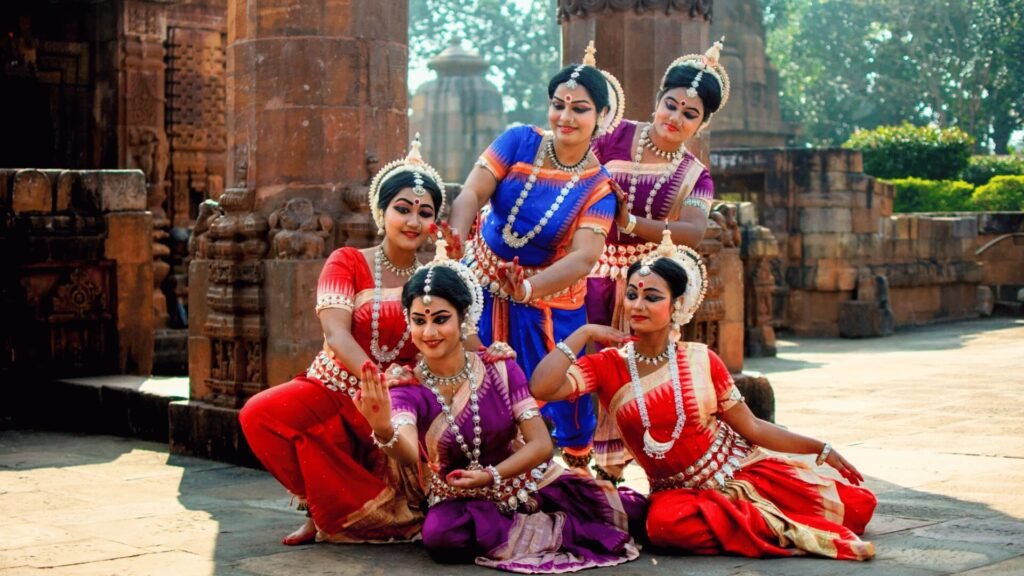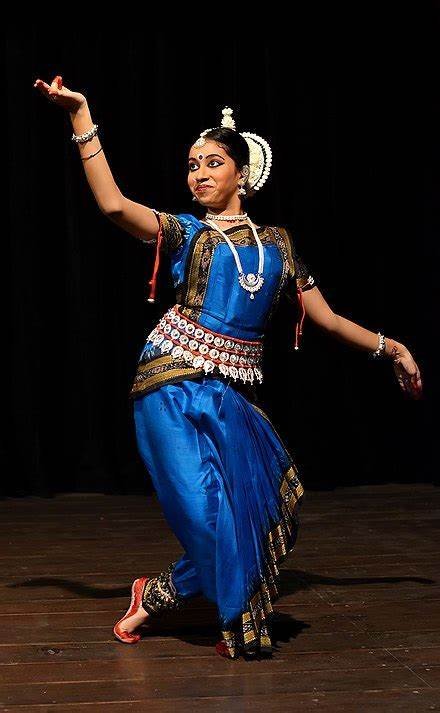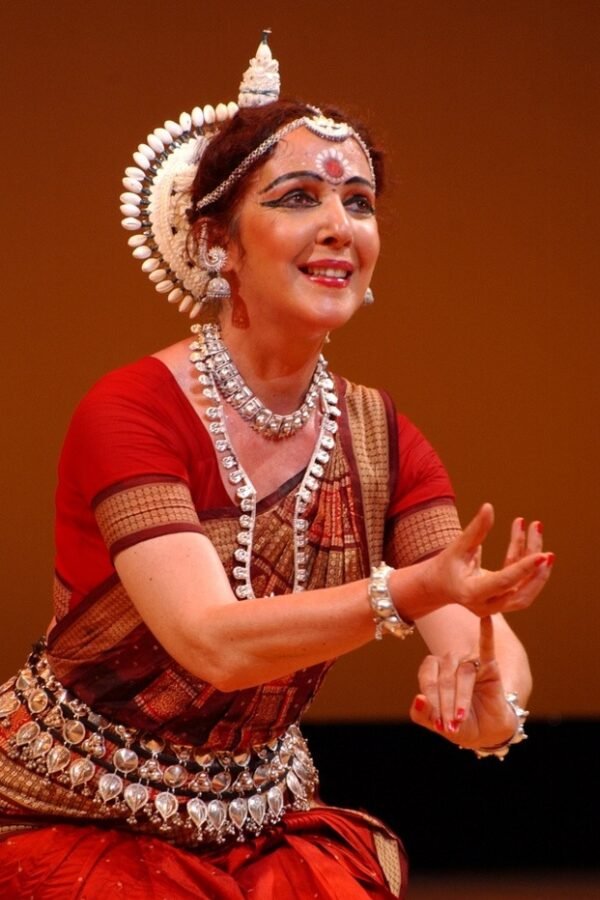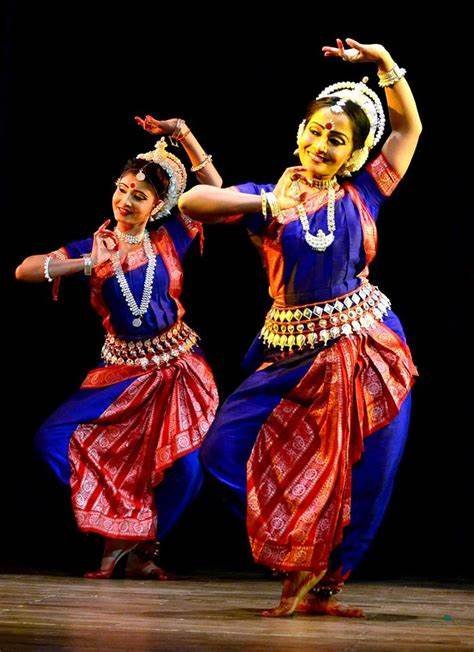Odissi Dance: A Journey Through Time, Grace, Wellness, and Devotion!
Shataghnee Chanda
July 29, 2024. 4 minute Read
Imagine a dancer moving gracefully, her every gesture telling an ancient story. This is the Odissi Dance. With roots dating back 2,000 years, Odissi is one of India’s oldest classical dance forms. Art historians often view it as a temple art that conveys tales of gods and goddesses through graceful body language.
Odissi dance is not just a series of movements—it’s a profound narrative deeply rooted in India’s culture, spirituality, and tradition. Originating in Odisha, this classical Indian dance form is a testament to the country’s rich cultural and spiritual heritage, recognized for its fluid postures, expressive gestures, and captivating rhythms.
Curious about Odissi?
Join The One Liner on the Odissi Dance: A Journey Through Time—its history, artistic details, and the dancers who keep it alive.
"
In this article, we will explore the mesmerising dance form Odissi’s history, techniques, its devotion, and legacy, guiding you through its captivating aspects and cultural significance.
History of Odissi
Origins of Odissi in Odisha!
Odissi dance originated in Odisha, a region on India’s eastern coast. This classical Indian dance, rooted in temple rituals, was initially performed as an offering to Hindu deities. Records of Odissi’s existence date back to the 2nd century BCE, when temple sculptures and carvings showcase postures similar to those in the dance today.
Development Through the Centuries
Over centuries, “Odissi Dance: A Journey Through Time” has evolved from its spiritual origins. During the medieval period, the dance was primarily performed by the Maharis, a group of temple dancers dedicated to Lord Jagannath. The British colonial era, however, posed a significant challenge as temple dances were discouraged, leading to a temporary decline. Yet, post-independence, Odissi saw a grand revival. Passionate artists and scholars brought it to the stage, ensuring its survival and transformation into the vibrant art form we know today.

Influence of Temples and Rituals
The influence of temples and rituals is central to Odissi Dance. The dance captures the essence of temple architecture and its spiritual ambiance. The graceful, sinuous movements of the dancers are reminiscent of the sculptures in Odisha’s iconic temples, like the Jagannath Temple in Puri and the Sun Temple in Konark, where dance and devotion are seamlessly intertwined.
Characteristics of Odissi
Key Features: Postures, Mudras, and Expressions
One of the most captivating features of Odissi Dance is the Tribhangi posture, a striking and sensual “S” curve created by the dancer’s bend at the neck, torso, and knee. This and the graceful mudras (hand gestures) form a unique dance vocabulary that tells complex stories.
Odissi’s expressions, known as “abhinaya,” allow dancers to embody various characters and emotions, bringing each story to life.
Did you know?
- Odissi Dance mudras are believed to have therapeutic benefits for physical and mental health. There are 63 mudras, and mudras like Pataka (open palm) and Ardhachandra (half-moon gesture) help improve blood circulation and oxygen flow by engaging specific hand muscles and finger positions, similar to acupressure techniques.
- According to traditional Ayurvedic and yogic beliefs, mudras help balance energy within the body, aiding in emotional stability and improved focus. It’s being proven Odissi dance has a positive impact on stress, anxiety, and depression in young adults.
Odissi's Unique Costume and Makeup are a Class part!
The Odissi dance is also marked by its unique costumes. Female dancers wear Bomkai Silk Sarees with intricate embroidery, vibrant colors, and traditional patterns. They adorn themselves with silver jewellery, and their faces are painted with intricate details to enhance expressions during the performance. Though less common, male dancers wear dhoti with similarly styled fabric and ornaments.
Interesting Facts!
The jewelry worn by Odissi Dancers include:
- Tahia: A crown worn around the hair bun
- Matha Patti: Worn on the forehead
- Alaka: A headpiece worn on the forehead
- Kapas: Ear covers or earrings, usually in a peacock pattern
- Bengapatia: A waist belt
- Sinthi: A traditional ornament
- Beni: An important ornament
Did You Know Why Odissi Dancers Specifically Use Silver Ornaments?
The reason is that, like several Indian Classical Dance forms, Odissi represents water elements (because of its geographical location, flowing movements and graceful movements, and because they often portray Goddess Ganga or Lord Krisha in aquatic forms) and silver symbolises water.
Music and Instruments Used
Odissi is inseparable from its music, which primarily consists of traditional Odissi music. Using instruments like the mandala (a type of drum), flute, violin, and sitar, the music sets the dance’s pace, rhythm, and tone. The lyrics, often inspired by ancient Sanskrit texts, enable dancers to convey romantic and devotional themes, making Odissi Dance: A Journey Through Time as much about sound as it is about movement.



Odissi Dance: Styles and Techniques
Different Styles of Odissi: Mahari and Gotipua
Odissi features two primary styles: Mahari and Gotipua. Mahari originated in temples and was performed exclusively by female dancers as a form of worship. The Gotipua style, on the other hand, developed as a folk tradition where young boys dressed as women to perform. These two styles contribute significantly to the overall richness of Odissi Dance: A Journey Through Time.
Mahari style is characterized by its grace and devotion, while the Gotipua style is known for its acrobatic movements and youthful energy.
Basic Techniques and Forms
Odissi dance is composed of three elements:
If left untreated, it creeps from mental fatigue to this state of burnout, brutally hard to bounce back from and maintain consistency in the long run. I mean, more often than not, a day off really does pay off sometimes just to unwind and refocus on getting things back on track with your motivation and general well-being.
- Mangalacharan (invocation),
- Batu or Battu (ritual worship), and
- Moksha (spiritual release).
Each element reflects a different stage of the profoundly spiritual journey in the Odissi Dance. Mangalacharan is the opening piece that pays homage to the gods, Batu is a ceremonial piece that involves offering flowers and prayers, and Moksha is the concluding piece that symbolises spiritual liberation.
Role of Improvisation
While Odissi’s techniques are well-structured, improvisation plays a significant role, allowing dancers to infuse their personal expression and creativity into the performance. This artistic freedom keeps Odissi Dance relevant and adaptable, ensuring it resonates with contemporary audiences without losing its traditional roots.
Odissi Dance: Training and Learning
Traditional Gurukul System
Historically, Odissi dancers were trained in the Gurukul system, where students lived with their teachers and learned through intense practice and dedication. This traditional approach created a strong bond between teacher and student, ensuring that Odissi Dance: A Journey Through Time was passed down with respect and purity.
Modern Dance Schools and Institutions
Today, many prestigious institutions offer formal Odissi dance training, blending tradition with contemporary teaching methods. Some renowned institutions include the Odissi Research Centre in Bhubaneswar and Nrityagram in Karnataka. These schools play a crucial role in preserving and promoting Odissi Dance globally, encouraging a new generation of dancers.
Odissi Teaches Importance of Practice and Discipline
Learning Odissi requires dedication, patience, and rigorous practice. Students spend years mastering the movements, expressions, and nuances that make Odissi Dance an art form of depth and grace. The discipline instilled in Odissi training fosters physical prowess and mental and emotional resilience.
Odissi Dance: Significance and Impact
Role of Spirituality and Devotion
At its core, Odissi Dance: A Journey through Time expresses spirituality and devotion. The dance form embodies the timeless devotion of Odisha’s people, creating a bridge between the earthly and divine. Every gesture and movement pays homage to Hindu deities, especially Lord Jagannath, reinforcing Odissi’s sacred origins.
1. Influence on Contemporary Dance
Although steeped in tradition, Odissi has also influenced contemporary dance. Today, choreographers blend elements of Odissi with modern dance, expanding its reach and appeal. This fusion has allowed Odissi Dance to remain culturally relevant, drawing appreciation from global audiences.
2. Global Recognition and Famous Dancers
The contribution of legendary Odissi dancers like Sanjukta Panigrahi, Kelucharan Mohapatra, and Protima Bedi has been invaluable in bringing Odissi Dance to international audiences. Their dedication and artistry helped place Odissi on the global stage, making it a celebrated aspect of Indian culture worldwide.

Famous Odissi Dance Performances
Over the years, Odissi dance has featured prominently in cultural festivals worldwide, from the Khajuraho Dance Festival in India to performances at prestigious venues like the Lincoln Center in New York. These events highlight the global appreciation for Odissi Dance and showcase its enduring charm and appeal.
Bollywood actress Hema Malini’s daughters Esha and Ahana Deol are trained Odissi dancers who have performed with their mother in charitable events and at the Khajuraho Dance Festival. The trio has also performed together in the dance ballet Parampara.
Final Thoughts
Odissi Dance: A Journey through Time !
Odissi dance is more than a performing art—it’s a legacy of devotion, a journey through history, and a testament to India’s artistic spirit. From its origins in ancient temples to its status as a global art form, “Odissi Dance: A Journey through Time” inspires audiences and performers alike. If you’re captivated by the elegance of Odissi, we encourage you to explore more, watch performances, or even consider learning this art form to experience its richness firsthand.
The One Liner invites you to delve deeper into the enchanting world of Odissi Dance and experience the beauty and spirituality that have sustained this classical Indian dance form for generations.



